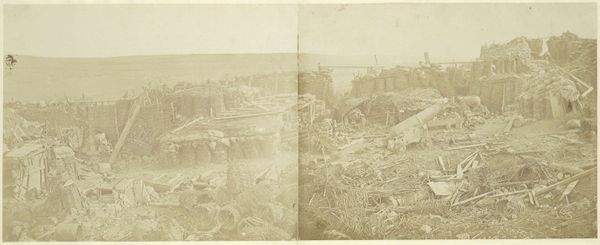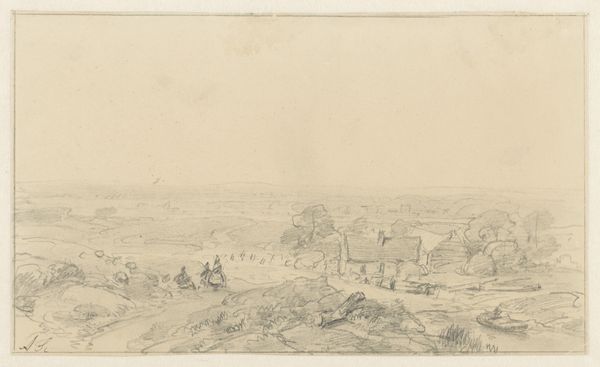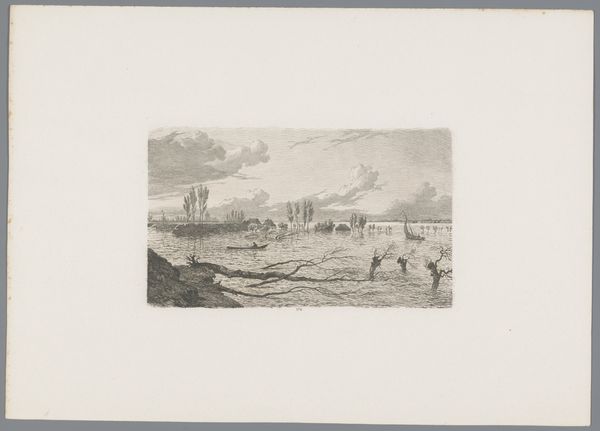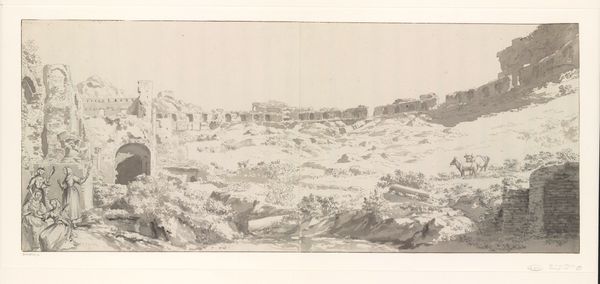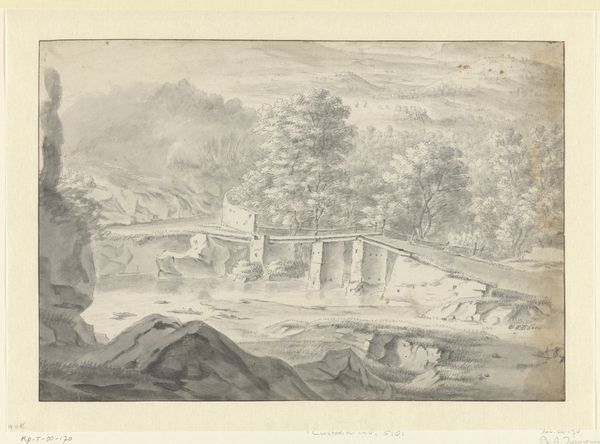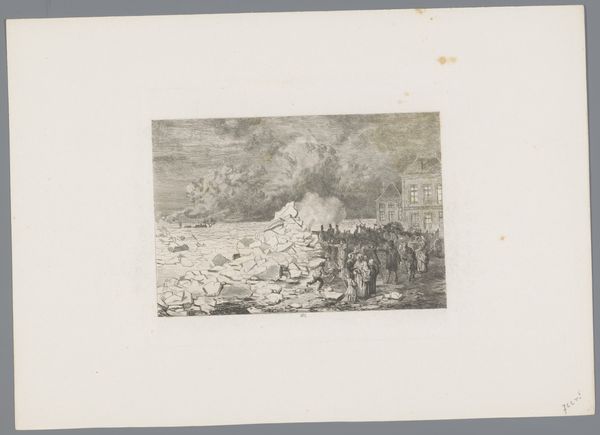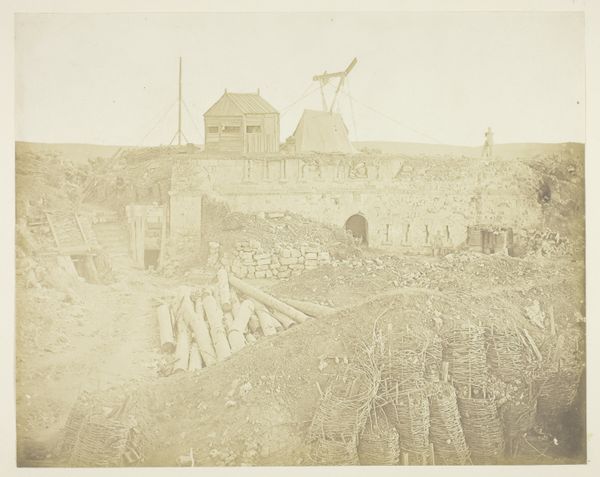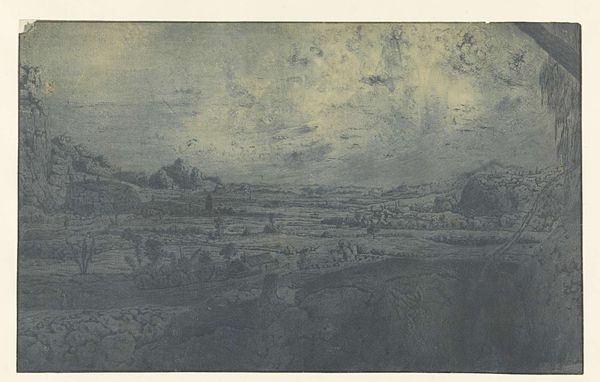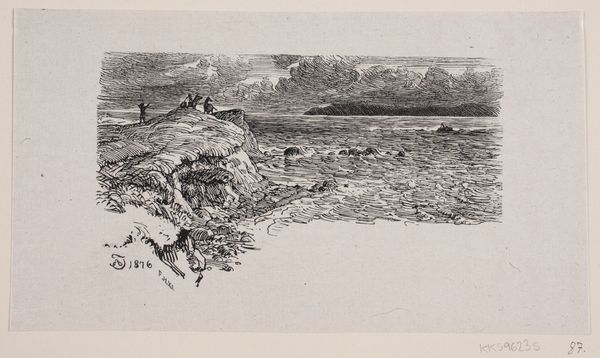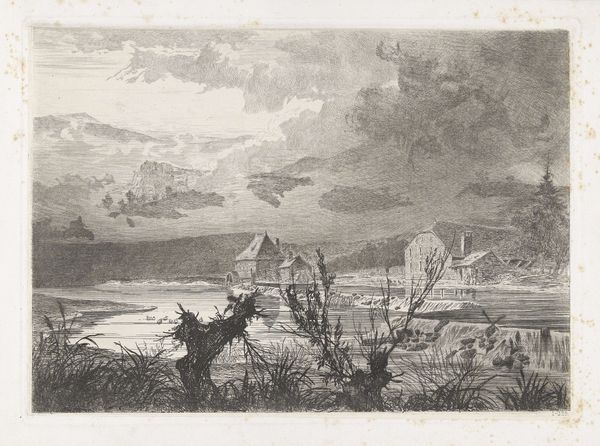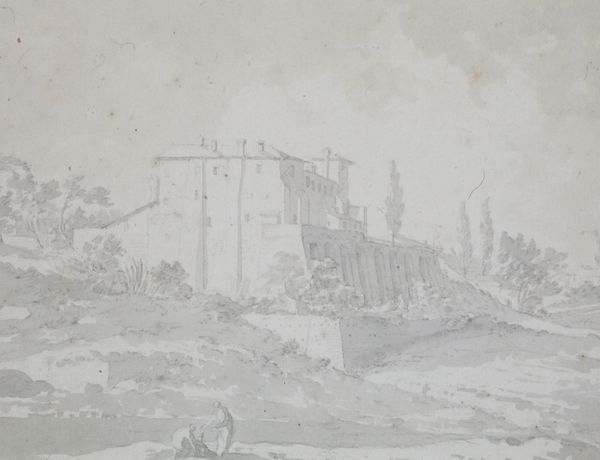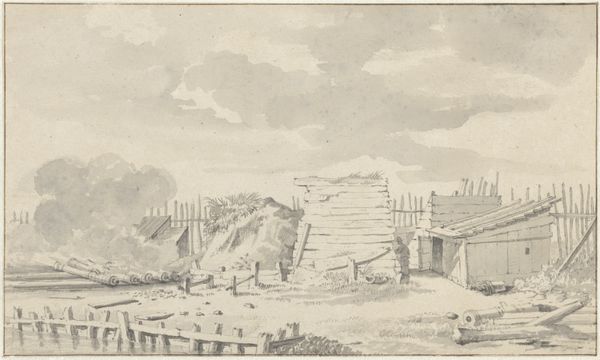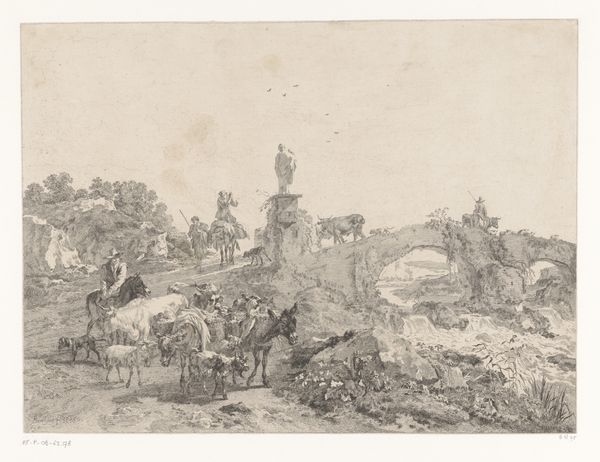
photogram, photography
#
16_19th-century
#
photogram
#
landscape
#
photography
Dimensions: 24.5 × 29.4 cm (image/paper); 32.2 × 40.5 cm (mount/page)
Copyright: Public Domain
Curator: Today, we’re looking at James Robertson's “Interior of the Redan,” a haunting photograph taken in 1855. Editor: It's an unsettling photograph; there's an immediate sense of chaos and fragility. It feels like peeking into the aftermath of something catastrophic. The bleached tones almost mute the horror, making it all the more eerie. Curator: What strikes me about this photogram is the sheer volume of woven materials used for fortification. Baskets, gabions, fascines… each represents a considerable amount of labor and readily available materials converted into war efforts. Editor: Right, you've got this almost mundane approach meeting total war! I am pulled into considering the labor conditions of its production, but can we really separate it from the emotional conditions that fostered a desperate building program for these defenses? The materials of war reflecting on labor and ingenuity that are turned to bleak ends. Curator: The collodion process Robertson employed here wasn’t straightforward. The wet plate technique required immense skill, turning the act of documentation into an intricate process—a complex form of production with tangible human stakes at its center. Editor: There's a certain beauty too, ironically, in how these chaotic elements resolve into texture on texture in the light; perhaps it has some value or meaning for this era beyond just military importance; if nothing else as a piece to evoke intense contemplation. Curator: Do you find its aesthetics justify its existence and significance? After all, documenting it serves as another mode of dissemination. Editor: I grapple with that constantly when looking at conflict images; can we make something ethically difficult beautiful and what is the role of this paradox in creating dialogue and meaning; as much as these aestheticizations normalize or perpetuate war's acceptance in society. Thanks, James, for stirring those thoughts, but yikes... Curator: Agreed. Considering it as a photogram, the photograph prompts us to reflect on war materials as artifacts reflecting social production, and the costs of social production. Editor: Thanks for your labor in unpacking it that way, such intense beauty born of intense pain demands some strong words; so worth the trip for those sentiments.
Comments
No comments
Be the first to comment and join the conversation on the ultimate creative platform.
